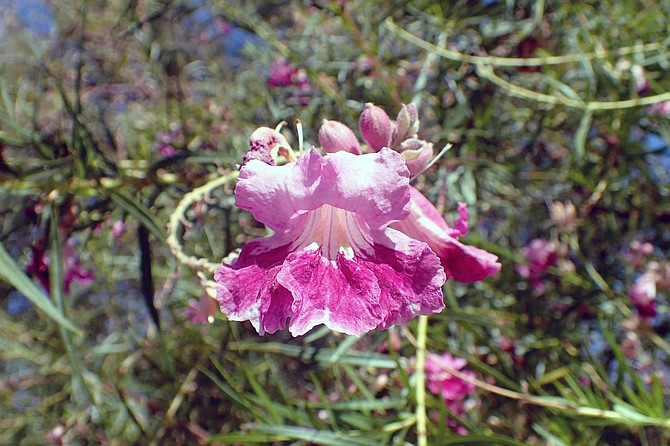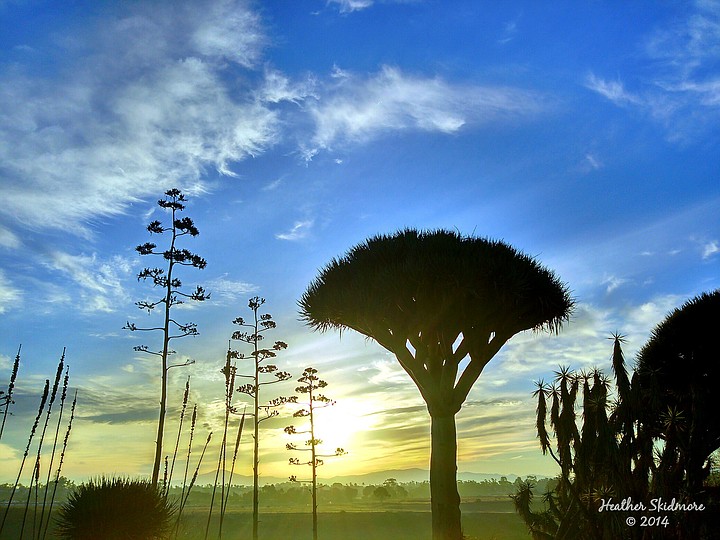 Facebook
Facebook
 X
X
 Instagram
Instagram
 TikTok
TikTok
 Youtube
Youtube

The Blooming of Desert Annuals is over, but not so for the stolid desert willows and smoke trees. Rooted to the beds of dry washes throughout Anza-Borrego’s lower valleys, both plants gather enough energy this time of year to put on an impressive floral show. The graceful, drooping branches of the desert willow hold fragrant, white blossoms, while the spindly smoke tree exhibits a myriad of blue-purple flowers. To avoid the intense midday heat, confine your desert explorations to early morning or early evening. And watch out for bees — they’re attracted to the blossoms, too.

Earliest Sunrise this year, reckoned in daylight saving time, was on Sunday, June 11, at 5:38 am. This event occurs about a week before the longest day of the year — the summer solstice — because of factors related to the shape of the Earth’s orbit and the angle between Earth’s axis and the plane of its revolution around the sun.

Buckwheat, a late-bloomer among native plants in our area, is showing off its small, unshowy clusters of cream-colored flowers this month. Several kinds of buckwheat — found in dry, sunny locations throughout San Diego County — are the source of the “wild buckwheat” honey sold locally. Near the coast, look for flattop buckwheat, common on south-facing slopes. Here, it shares space with other low-growing shrubs of the sage-scrub plant community like black sage and California sagebrush.


The Blooming of Desert Annuals is over, but not so for the stolid desert willows and smoke trees. Rooted to the beds of dry washes throughout Anza-Borrego’s lower valleys, both plants gather enough energy this time of year to put on an impressive floral show. The graceful, drooping branches of the desert willow hold fragrant, white blossoms, while the spindly smoke tree exhibits a myriad of blue-purple flowers. To avoid the intense midday heat, confine your desert explorations to early morning or early evening. And watch out for bees — they’re attracted to the blossoms, too.

Earliest Sunrise this year, reckoned in daylight saving time, was on Sunday, June 11, at 5:38 am. This event occurs about a week before the longest day of the year — the summer solstice — because of factors related to the shape of the Earth’s orbit and the angle between Earth’s axis and the plane of its revolution around the sun.

Buckwheat, a late-bloomer among native plants in our area, is showing off its small, unshowy clusters of cream-colored flowers this month. Several kinds of buckwheat — found in dry, sunny locations throughout San Diego County — are the source of the “wild buckwheat” honey sold locally. Near the coast, look for flattop buckwheat, common on south-facing slopes. Here, it shares space with other low-growing shrubs of the sage-scrub plant community like black sage and California sagebrush.
Comments